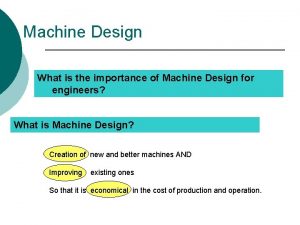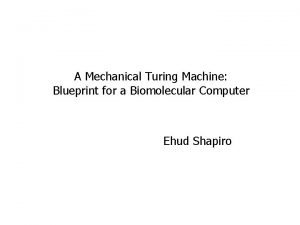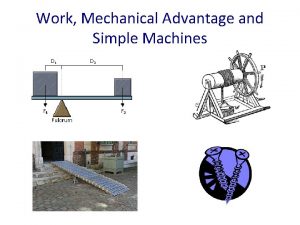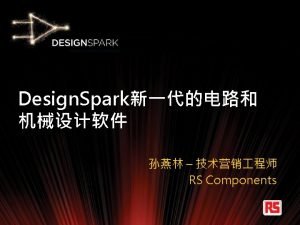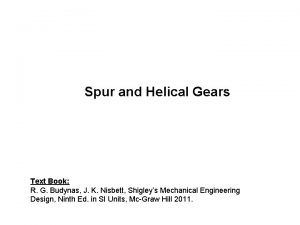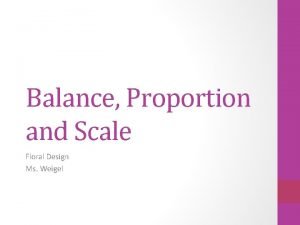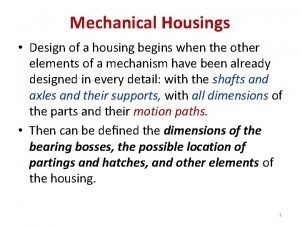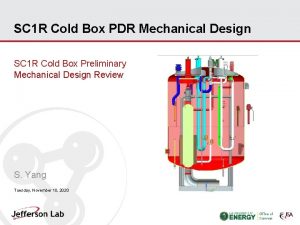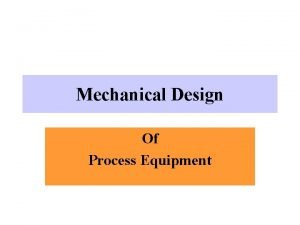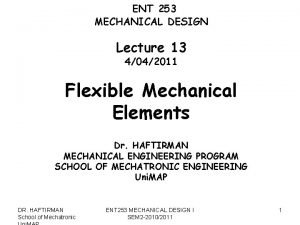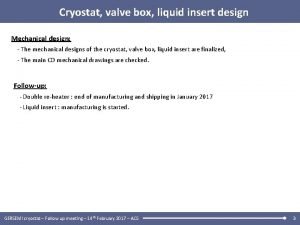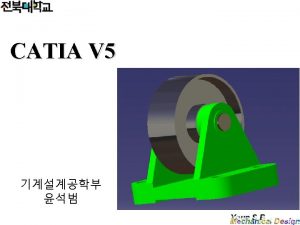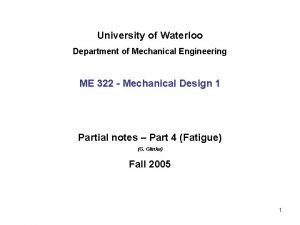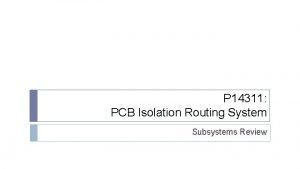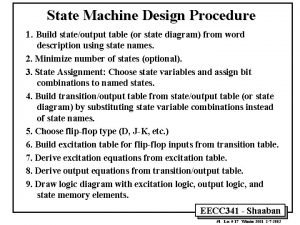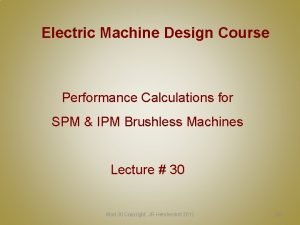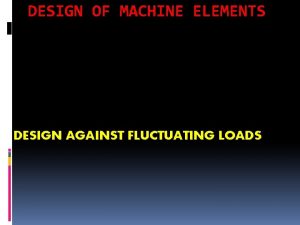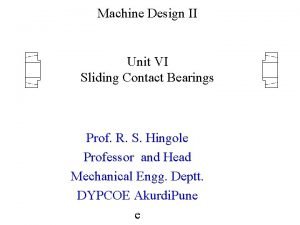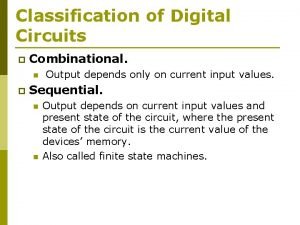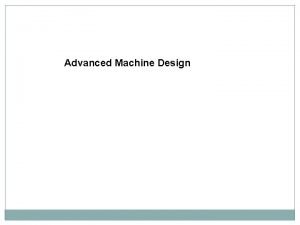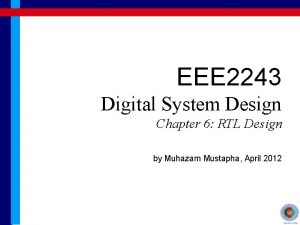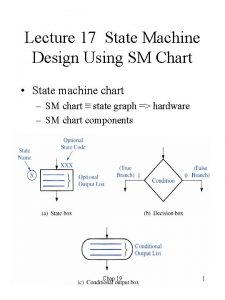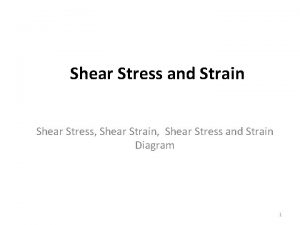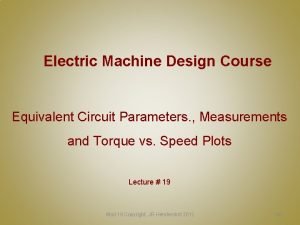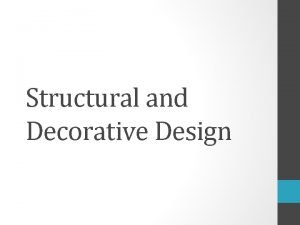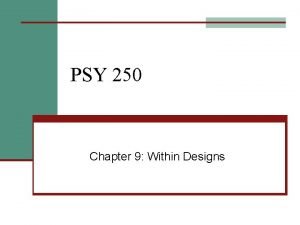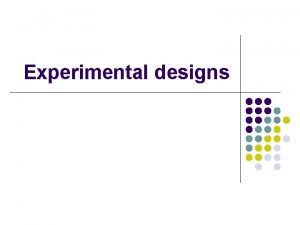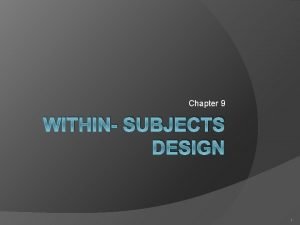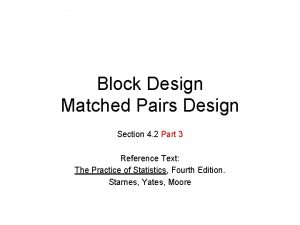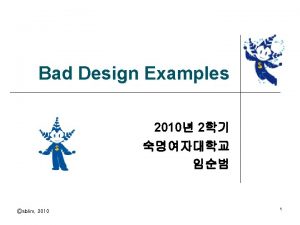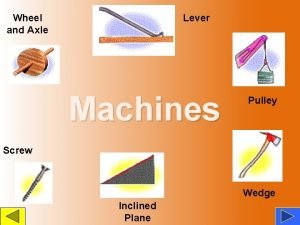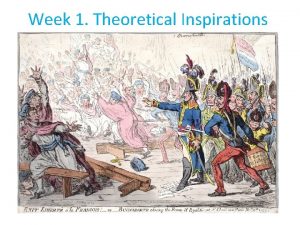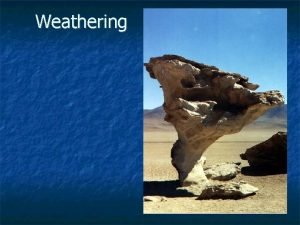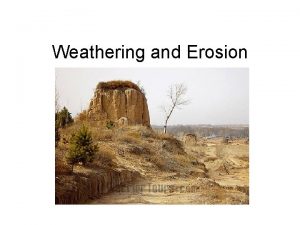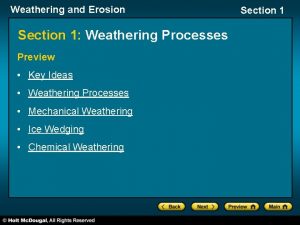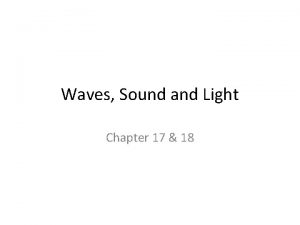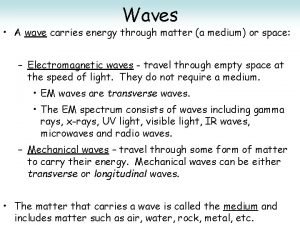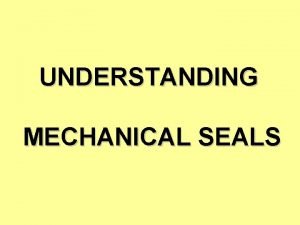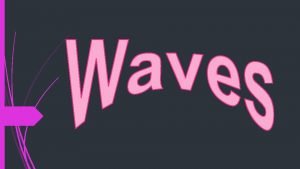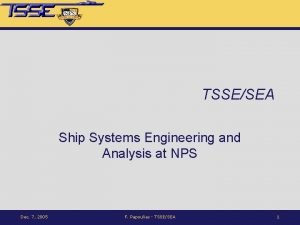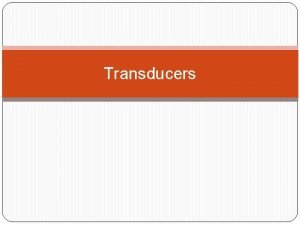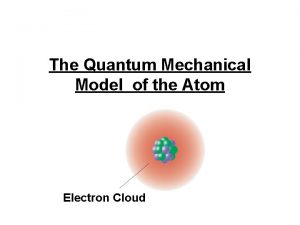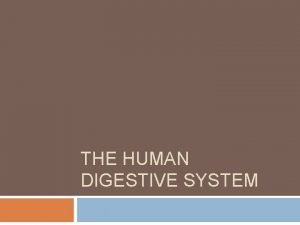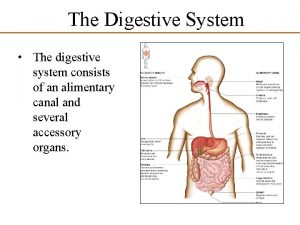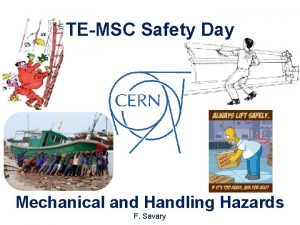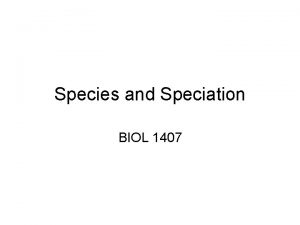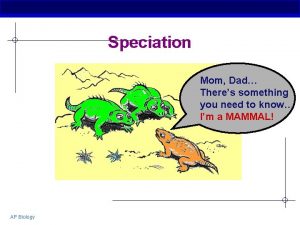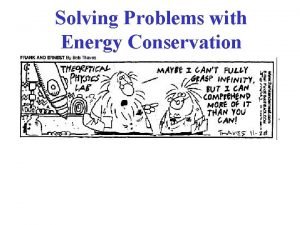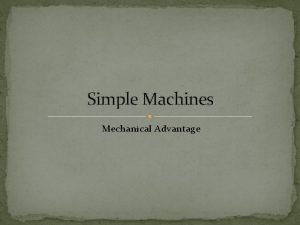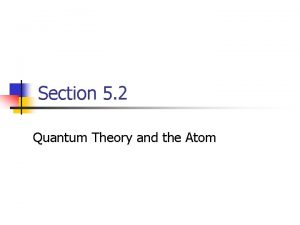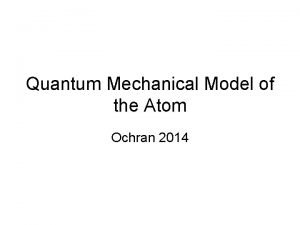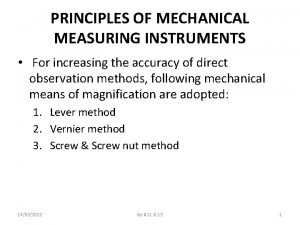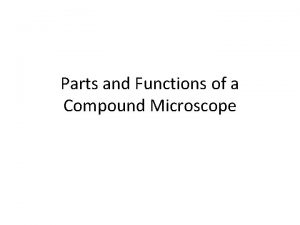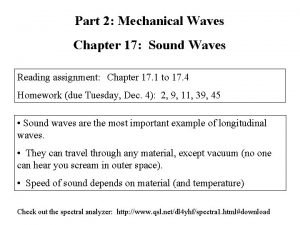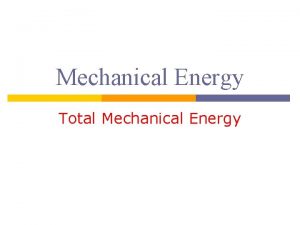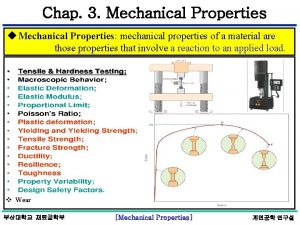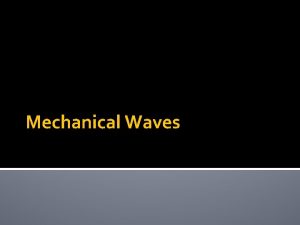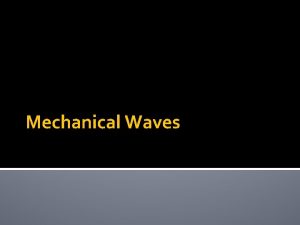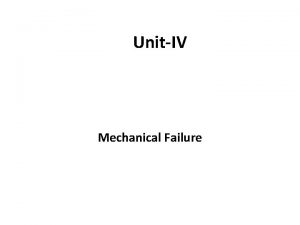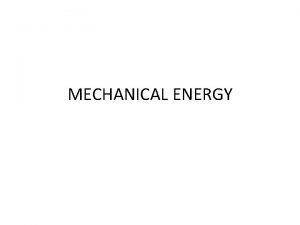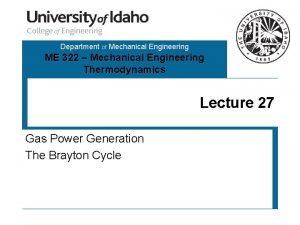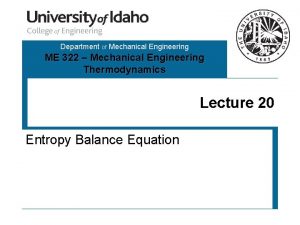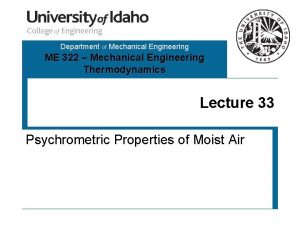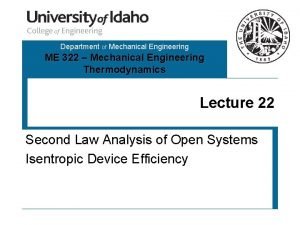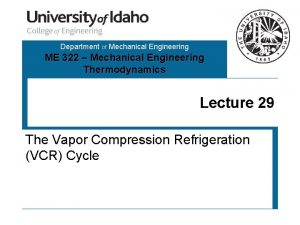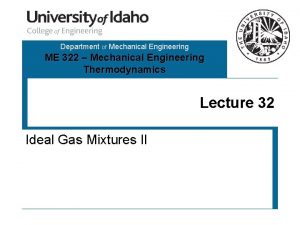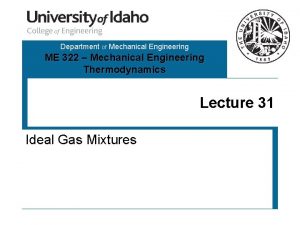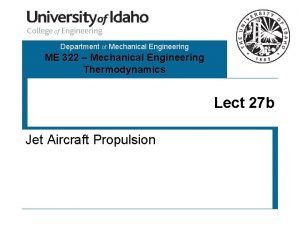Design of Machine ElementsI DEPARTMENT OF MECHANICAL ASST
![Design of Machine Elements-I DEPARTMENT OF MECHANICAL ASST. PROF. KIRAN KADAM M. E. [DESIGN]B. Design of Machine Elements-I DEPARTMENT OF MECHANICAL ASST. PROF. KIRAN KADAM M. E. [DESIGN]B.](https://slidetodoc.com/presentation_image/30126df2ffae848d983d1f482cef4ad0/image-1.jpg)















































































































- Slides: 112
![Design of Machine ElementsI DEPARTMENT OF MECHANICAL ASST PROF KIRAN KADAM M E DESIGNB Design of Machine Elements-I DEPARTMENT OF MECHANICAL ASST. PROF. KIRAN KADAM M. E. [DESIGN]B.](https://slidetodoc.com/presentation_image/30126df2ffae848d983d1f482cef4ad0/image-1.jpg)
Design of Machine Elements-I DEPARTMENT OF MECHANICAL ASST. PROF. KIRAN KADAM M. E. [DESIGN]B. E. [MECHANICAL]

GD&T • Datums in GD&T • Symbol:

Feature Control Frame • Example Frame:

Parts of the Feature Control Frame


• • Leader Arrow – This arrow points to the feature that the geometric control is placed on. If the arrow points to a surface than the surface is controlled by the GD&T. If it points to a diametric dimension, then the axis is controlled by GD&T. The arrow is optional but helps clarify the feature being controlled. Geometric Symbol – This is where your geometric control is specified. See our page on GD&T symbols or the sidebar for a description of each symbol. Diameter Symbol (if required) – If the geometric control is a diametrical tolerance then the diameter symbol (Ø) will be in front of the tolerance value. Tolerance Value – If the tolerance is a diameter you will see the Ø symbol next to the dimension signifying a diametric tolerance zone. The tolerance of the GD&T is in whatever unit of measure that the drawing is written in. All of our examples on GD&T basics are metric units. Feature of Size or Tolerance Modifiers (if required) – This is where you call out max material condition or a projected tolerance in the feature control frame. See the Modifiers section of the GD&T Symbols page for further clarification on these features. Primary Datum (if required) – If a datum is required, this is the main datum used for the GD&T control. The letter corresponds to a feature somewhere on the part which will be marked with the same letter. This is the datum that must be constrained first when measuring the part. Note: The order of the datum is important for measurement of the part. The primary datum is usually held in three places to fix 3 degrees of freedom Secondary Datum (if required) – If a secondary datum is required, it will be to the right of the primary datum. This letter corresponds to a feature somewhere on the part which will be marked with the same letter. During measurement, this is the datum is fixated after the primary datum. Tertiary Datum (if required) – If a third datum is required, it will be to the right of the secondary datum. This letter corresponds to a feature somewhere on the part which will be marked with the same letter. During measurement, this is the datum is fixated last.

• Definition: • A datum is theoretical exact plane, axis or point location that GD&T or dimensional tolerances are referenced to. You can think of them as an anchor for the entire part; where the other features are referenced from. A datum feature is usually an important functional feature that needs to be controlled during measurement as well.

• All GD&T symbols except for the form tolerances (straightness, flatness, circularity and cylindrici ty) can use datums to help specify what geometrical control is needed on the part. When it comes to GD&T, datum symbols are your starting points where all other features are referenced from.

How Datum Features are Shown on a Drawing • The datum features on a drawing are denoted with a series of capital letters. These letters are in boxes and tied to the datum feature with a black triangle. This letter will also show up in any feature control frame that uses this datum feature as a reference. A feature control frame can reference multiple datums at once and each one can be referenced as many times as needed.


Notation is Important on Drawings • As stated before, datums can be located on points, axes, edges, and surfaces. It is important though that they is called out correctly on the drawing to control the right type of feature. Here is how different types of features are called out on engineering drawings.


On a surface

On an Axis

True Position • True Position: • Symbol: • Relative to Datum: Yes • MMC or LMC applicable: Yes (common)

True center position of a hole (RFS w/ 2 Datums)

Position of a hole under MMC (3 Datums)

GD&T Tolerance Zone:


Circularity • GD&T Symbol: • Relative to Datum: No • MMC or LMC applicable: No


GD&T Tolerance Zone: • Two concentric circles, one inner and one outer, in which all the points within the curcular surface must fall into. The tolerance zone lies on a plane that is perpendicular to the central axis of the circular feature.


Example:

Parallelism • • GD&T Symbol: Relative to Datum: Yes MMC or LMC applicable: Yes GD&T Drawing Callout:


Gauging / Measurement:

Parallelism Example:


Cylindricity • • GD&T Symbol: Relative to Datum: No MMC or LMC applicable: No Drawing Callout:

GD&T Tolerance Zone: • Two concentric cylinders that run the entire length of the feature – one inner and one outer, in which all the points on the entire surface of the cylindrical feature must fall into. The entire length of the called out feature would be controlled.


Example:

Profile of a Surface • GD&T Symbol: • Relative to Datum: Optional • MMC or LMC applicable: No

Gauging / Measurement:

Example:

Runout • • GD&T Symbol: Relative to Datum: Yes MMC or LMC applicable: No Drawing Callout

Gauging / Measurement:

Example:

Concentricity • • GD&T Symbol: Relative to Datum: Yes MMC or LMC applicable: No Drawing Callout:

Gauging / Measurement:

Example:

Example:

Perpendicularity • GD&T Symbol: • • Relative to Datum: Yes MMC or LMC applicable: Yes GD&T Drawing Callout: Surface Perpendicularity:

Surface Perpendicularity:

Axis Perpendicularity:

GD&T Tolerance Zone: Surface:

Axis:

Gauging / Measurement: • Surface:

Axis:


Total Runout • • GD&T Symbol: Relative to Datum: Yes MMC or LMC applicable: No Drawing Callout:

Gauging / Measurement:

Example:


Profile of a Line • • GD&T Symbol: Relative to Datum: Optional MMC or LMC applicable: No Drawing Callout:

Gauging / Measurement:

Example

Angularity • • GD&T Symbol: Relative to Datum: Yes MMC or LMC applicable: Yes (Uncommon) Drawing Callout:

Gauging / Measurement:

Angularity

Straightness • GD&T Symbol: • Relative to Datum: No • MMC or LMC applicable: Yes – Axis Straightness • Drawing Callout:

Surface Straightness

Axis Straightness with Maximum Material Condition

Gauging / Measurement: • Surface:

Symmetry • • GD&T Symbol: Relative to Datum: Yes MMC or LMC applicable: No Drawing Callout:

Gauging / Measurement:

Example:

Flatness • • Symbol: Relative to Datum: No MMC or LMC applicable: Yes – New in 2009 Drawing Callout

Gauging / Measurement:


Maximum Material Condition (MMC) • Symbol: • Category: Feature of Size • Definition: Maximum Material Condition or for short, MMC, is a feature of size symbol that describes the condition of a feature or part where the maximum amount of material (volume/size) exists within its dimensional tolerance.


The only GD&T Symbols where Max Material Condition can be applied are: • • • Straightness (axis) Parallelism Perpendicularity Angularity True Position – very common

Least Material Condition (LMC) • • Symbol: Category: Feature of Size Definition: Least material condition is a feature of size symbol that describes a dimensional or size condition where the least amount of material (volume/size) exists within its dimensional tolerance.


DIMENSIONS, TOLERANCES, AND SURFACES 1. Dimensions, Tolerances, and Related Attributes 2. Conventional Measuring Instruments and Gages 3. Surfaces 4. Measurement of Surfaces 5. Effect of Manufacturing Processes

Dimensions and Tolerances • Factors that determine the performance of a manufactured product, other than mechanical and physical properties, include : – Dimensions - linear or angular sizes of a component specified on the part drawing – Tolerances - allowable variations from the specified part dimensions that are permitted in manufacturing

Dimensions (ANSI Y 14. 5 M‑ 1982) A dimension is "a numerical value expressed in appropriate units of measure and indicated on a drawing and in other documents along with lines, symbols, and notes to define the size or geometric characteristic, or both, of a part or part feature" • The dimension indicates the part size desired by the designer, if the part could be made with no errors or variations in the fabrication process

Tolerances (ANSI Y 14. 5 M‑ 1982): A tolerance is "the total amount by which a specific dimension is permitted to vary. The tolerance is the difference between the maximum and minimum limits" • Variations occur in any manufacturing process, which are manifested as variations in part size • Tolerances are used to define the limits of the allowed variation

Bilateral Tolerance • Variation is permitted in both positive and negative directions from the nominal dimension • Possible for a bilateral tolerance to be unbalanced – Ex: 2. 500 +0. 010, -0. 005

Unilateral Tolerance • Variation from the specified dimension is permitted in only one direction • Either positive or negative, but not both

Limit Dimensions • Permissible variation in a part feature size consists of the maximum and minimum dimensions allowed

Accuracy and Precision Accuracy - the degree to which a measured value agrees with the true value of the quantity of interest • A measurement procedure is accurate when it avoids systematic errors (positive or negative deviations that are consistent from one measurement to the next) Precision - the degree of repeatability in the measurement process • Good precision means that random errors in the measurement procedure are minimized

Conventional Measuring Instruments and Gages • • • Precision gage blocks Measuring instruments for linear dimensions Comparative instruments Fixed gages Angular measurements

Precision Gage Blocks Standards against which other dimensional measuring instruments and gages are compared • Usually square or rectangular blocks • Surfaces are finished to be dimensionally accurate and parallel to several millionths of an inch and are polished to a mirror finish • Precision gage blocks are available in certain standard sizes or in sets, the latter containing a variety of different sized blocks

Measurement of Linear Dimensions • Measuring instruments are divided into two types: – Graduated measuring devices include a set of markings on a linear or angular scale to which the object's feature of interest can be compared for measurement – Nongraduated measuring devices have no scale and are used to compare dimensions or to transfer a dimension for measurement by a graduated device

Micrometer • External micrometer, standard one‑inch size with digital readout (photo courtesy of L. S. Starret Co. )

Calipers • Two sizes of outside calipers (photo courtesy of L. S. Starret Co. )

Mechanical Gages: Dial Indicators • Mechanical gages are designed to mechanically magnify the deviation to permit observation • Most common instrument in this category is the dial indicator, which converts and amplifies the linear movement of a contact pointer into rotation of a dial – The dial is graduated in small units such as 0. 01 mm or 0. 001 inch – Applications: measuring straightness, flatness, parallelism, squareness, roundness, and runout

Dial Indicator • Front view shows dial and graduated face; back view shows cover plate removed (photo courtesy of Federal Products Co. )

Dial Indicator Setup to Measure Runout • As part is rotated about its center, variations in outside surface relative to center are indicated on the dial

Electronic Gages Family of measuring and gaging instruments based on transducers capable of converting a linear displacement into an electrical signal • Electrical signal is amplified and transformed into suitable data format such as a digital readout • Applications of electronic gages have grown rapidly in recent years, driven by advances in microprocessor technology, and are gradually replacing many of the conventional devices

GO/NO‑GO gages So-named because one gage limit allows the part to be inserted while the other limit does not • GO limit - used to check the dimension at its maximum material condition – Minimum size for internal feature such as a hole – Maximum size for external feature such as an outside diameter • NO‑GO limit - used to inspect the minimum material condition of the dimension in question

Snap Gage • Gaging the diameter of a part (difference in height of GO and NO‑GO gage buttons is exaggerated)

Plug Gage • Gaging of a hole diameter (difference in diameters of GO and NO-GO plugs is exaggerated)

Measurement of Angles • Bevel protractor with Vernier scale (courtesy L. S. Starrett Co. )

Surfaces Nominal surface – designer’s intended surface contour of part, defined by lines in the engineering drawing – Nominal surfaces appear as absolutely straight lines, ideal circles, round holes, and other edges and surfaces that are geometrically perfect • Actual surfaces of a part are determined by the manufacturing processes used to make them – Variety of processes result in wide variations in surface characteristics

Why Surfaces are Important • Aesthetic reasons • Surfaces affect safety • Friction and wear depend on surface characteristics • Surfaces affect mechanical and physical properties • Assembly of parts is affected by their surfaces • Smooth surfaces make better electrical contacts

Surface Technology • Concerned with: – – Defining the characteristics of a surface Surface texture Surface integrity Relationship between manufacturing processes and characteristics of resulting surface

Metallic Part Surface • Magnified cross section of a typical metallic part surface

Surface Texture The topography and geometric features of the surface • When highly magnified, the surface is anything but straight and smooth – It has roughness, waviness, and flaws • It also possesses a pattern and/or direction resulting from the mechanical process that produced it

Surface Texture • Repetitive and/or random deviations from the nominal surface of an object

Four Elements of Surface Texture 1. Roughness - small, finely‑spaced deviations from nominal surface – Determined by material characteristics and processes that formed the surface 2. Waviness - deviations of much larger spacing – Waviness deviations occur due to work deflection, vibration, tooling, and similar factors – Roughness is superimposed on waviness

Four Elements of Surface Texture 3. Lay - predominant direction or pattern of the surface texture

Four Elements of Surface Texture 4. Flaws - irregularities that occur occasionally on the surface – Includes cracks, scratches, inclusions, and similar defects in the surface – Although some flaws relate to surface texture, they also affect surface integrity

Surface Roughness and Surface Finish • Surface roughness - a measurable characteristic based on roughness deviations • Surface finish - a more subjective term denoting smoothness and general quality of a surface – In popular usage, surface finish is often used as a synonym for surface roughness – Both terms are within the scope of surface texture

Surface Roughness Average of vertical deviations from nominal surface over a specified surface length

Surface Roughness Equation • Arithmetic average (AA) based on absolute values of deviations, and is referred to as average roughness where Ra = average roughness; y = vertical deviation from nominal surface (absolute value); and Lm = specified distance over which the surface deviations are measured

Alternative Surface Roughness Equation • Approximation of previous equation is perhaps easier to comprehend where Ra has same meaning as above; yi = vertical deviations (absolute value) identified by subscript i; and n = number of deviations included in Lm

Cutoff Length • A problem with the Ra computation is that waviness may get included • To deal with this problem, a parameter called the cutoff length is used as a filter to separate waviness from roughness deviations • Cutoff length is a sampling distance along the surface – A sampling distance shorter than the waviness eliminates waviness deviations and only includes roughness deviations

Surface Roughness Specification • Surface texture symbols in engineering drawings: (a) the symbol, and (b) symbol with identification labels
 Need of machine design
Need of machine design Machine elements in mechanical design 5th edition
Machine elements in mechanical design 5th edition Machine elements in mechanical design
Machine elements in mechanical design Actual mechanical advantage vs ideal mechanical advantage
Actual mechanical advantage vs ideal mechanical advantage How does mechanical advantage work
How does mechanical advantage work Mechanical turing machine
Mechanical turing machine Learning outcomes generator
Learning outcomes generator Mechanical machine
Mechanical machine 3 types of pulley
3 types of pulley Finite state machine vending machine example
Finite state machine vending machine example Mealy moore
Mealy moore Mealy to moore conversion
Mealy to moore conversion Differentiate between simple machine and compound machine
Differentiate between simple machine and compound machine Designspark.com
Designspark.com Hydraulic baffled wall flocculator
Hydraulic baffled wall flocculator Mechanical engineering design book
Mechanical engineering design book Mechanical considerations of transmission line
Mechanical considerations of transmission line Mechanical balance in floral design
Mechanical balance in floral design Mechanical housing design
Mechanical housing design Mechanical design and fabrication
Mechanical design and fabrication Mechanical design
Mechanical design Mechanical process equipment
Mechanical process equipment Mechanical
Mechanical Mechanical design
Mechanical design Mechanical design
Mechanical design Mechanical engineering design
Mechanical engineering design Isolation routing
Isolation routing General consideration in machine design
General consideration in machine design Machine design
Machine design Electric machine design coaching
Electric machine design coaching Electric machine design training
Electric machine design training Design against fluctuating load problems
Design against fluctuating load problems Composite filament winding machine
Composite filament winding machine Machine learning system design examples
Machine learning system design examples Sliding contact bearing and rolling contact bearing
Sliding contact bearing and rolling contact bearing State machine design
State machine design Advanced machine engineering
Advanced machine engineering Rtl design of soda dispenser machine
Rtl design of soda dispenser machine Explain machine independent loader features in detail.
Explain machine independent loader features in detail. Sm diagram
Sm diagram Stresses
Stresses Electric machine design training
Electric machine design training Vcaa visual communication design
Vcaa visual communication design For designing
For designing Conventional/stylized design
Conventional/stylized design Structural design and decorative design
Structural design and decorative design Within subjects vs between subjects
Within subjects vs between subjects Split range
Split range Within subject design vs between subject design
Within subject design vs between subject design Between-subjects design vs within
Between-subjects design vs within Matched pair design vs block design
Matched pair design vs block design User interface design in system analysis and design
User interface design in system analysis and design Matched pairs experimental design
Matched pairs experimental design Elements of design in interior design ppt
Elements of design in interior design ppt Bad designs examples
Bad designs examples Repeated measures design vs independent measures design
Repeated measures design vs independent measures design Dialogue design in system analysis and design
Dialogue design in system analysis and design Floral design timeline
Floral design timeline What does product and service design do
What does product and service design do Libidau
Libidau Design brief
Design brief Yildiz technical university erasmus
Yildiz technical university erasmus Cutting tools and equipment
Cutting tools and equipment Example of mechanical energy
Example of mechanical energy Fixed pulley
Fixed pulley How does mechanical advantage work
How does mechanical advantage work Wedge wheel and axle
Wedge wheel and axle What is an example of mechanical energy
What is an example of mechanical energy Speciation can only be observed over millions of years
Speciation can only be observed over millions of years Steven day rit
Steven day rit Mechanical solidarity definition sociology
Mechanical solidarity definition sociology Mechanical and chemical weathering examples
Mechanical and chemical weathering examples Weathering erosion
Weathering erosion Mechanical and chemical weathering venn diagram
Mechanical and chemical weathering venn diagram Identify three agents of mechanical weathering
Identify three agents of mechanical weathering Characteristics of mechanical waves
Characteristics of mechanical waves Difference between mechanical and electromagnetic waves
Difference between mechanical and electromagnetic waves Mechanical wave and electromagnetic wave
Mechanical wave and electromagnetic wave A wave carries
A wave carries Differences between mechanical and electromagnetic waves
Differences between mechanical and electromagnetic waves Pusher vs non pusher mechanical seal
Pusher vs non pusher mechanical seal Type of mechanical waves
Type of mechanical waves Nps mechanical engineering
Nps mechanical engineering Introduction to transducers
Introduction to transducers Organic solidarity
Organic solidarity Quantum model
Quantum model Mechanical reasoning test gears
Mechanical reasoning test gears Pathway of digestion
Pathway of digestion Mechanical digestion
Mechanical digestion Mechanical hazard
Mechanical hazard Mechanical methods of sterilization
Mechanical methods of sterilization Isolated by
Isolated by Mechanical isolation in plants
Mechanical isolation in plants How to solve mechanical energy
How to solve mechanical energy Criticisms of conflict theory
Criticisms of conflict theory Ma 6
Ma 6 The ratio of resistance force to effort force
The ratio of resistance force to effort force It is the reciprocal of velocity ratio
It is the reciprocal of velocity ratio How to calculate mechanical advantage
How to calculate mechanical advantage Quantum mechanical orbital
Quantum mechanical orbital Mechanical resistance exercise
Mechanical resistance exercise Schrodinger wave mechanical model
Schrodinger wave mechanical model Sublevel d
Sublevel d Quantum mechanical model definition
Quantum mechanical model definition Modern quantum mechanical model
Modern quantum mechanical model Wheel and axle principle in extraction
Wheel and axle principle in extraction Mechanical measuring instruments
Mechanical measuring instruments Gmail
Gmail Snap fit
Snap fit Mechanical waves and electromagnetic waves similarities
Mechanical waves and electromagnetic waves similarities Mastering physics
Mastering physics Attached to the arm and bears the lenses
Attached to the arm and bears the lenses Chapter 17 mechanical waves and sound wordwise answer key
Chapter 17 mechanical waves and sound wordwise answer key
